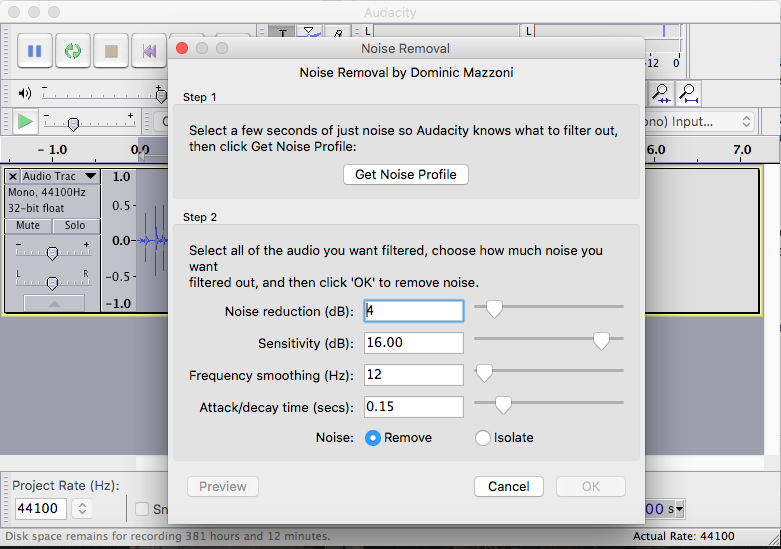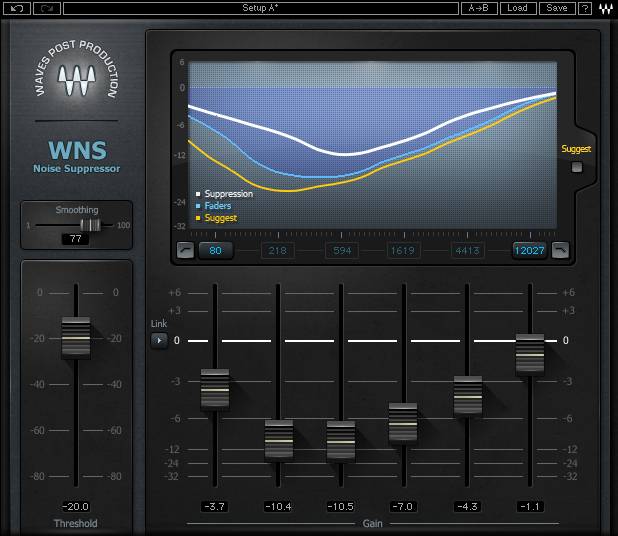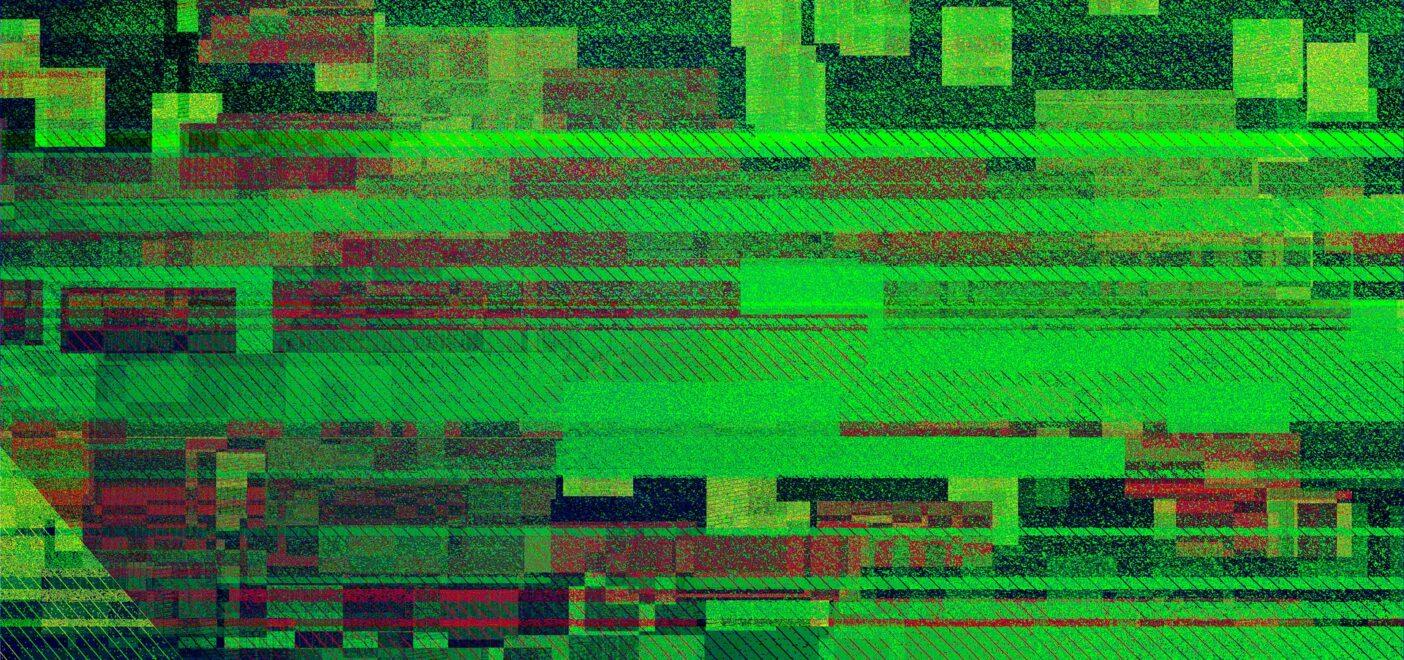One of the greatest challenges every engineer faces is unwanted noise. As we know from discussing studio soundproofing, bending sound to our will takes a bit of effort. The nature of recording means that sometimes unwanted ambiance or other sounds will find a way in. If you lack proper soundproofing, this battle becomes that much more difficult. Fortunately, we have a remedy: noise removal.
How Does Noise Removal Work?
With any signal comes noise. The stronger the signal, the less noise there is. However, no signal lacks noise entirely. Some smart engineers began looking for ways to reduce as much noise as possible in any given signal. Effective noise reduction techniques in music production began in the 1960s with Ray Dolby. At that time, the Dolby Tape A method emphasized four frequency bands during recording and then lowered them during playback. A decade later, Philips came up with its own noise removal method, dynamic noise limiting (DNL). This circuitry could affect any source when played back, making it widely popular.

These early pioneers of noise removal paved the way for more recent digital noise removal algorithms and plugins. However, the principle remains the same from the ’60s to now. Without getting too technical, noise removal programs hone in on specific frequencies, either during recording or playback. Once targeted, the level of these frequencies can be reduced. You can determine how much you want to reduce these frequencies by setting parameters, as well as what you don’t want to be affected.
What Causes Unwanted Noise?
In short, energy. We don’t live in a vacuum out in space. The air around us carries sound waves. Additionally, anything that produces or uses electricity gives off a subtle (or not so subtle) hum. This could be your refrigerator down the hall, your Peavey 6505+, or the audio cables for your direct input bass track. Some ambient sound will creep into even the most vacuum-sealed, soundproofed lockbox of a studio.
Aside from background noise, clicks, crackles, and pops can occur for a variety of reasons. When recording vocals or voiceovers, these noises can occur simply from mouth movements. The slip of a tongue or lip can result in some crazy (and funny) noises. Besides human error, electronic glitches with cables, DAWs, preamps, and any other piece of gear can also yield some startling roars.
The good news is that most of these hums, hisses, clicks, and crackles are either brief or consistent. For instance, background noise emitted by a circuit usually hums around the same frequency throughout. Crackles or pops typically last only a fraction of a second. These facts make noise removal much easier.
Different Techniques to Remove or Reduce Noise
The advent of noise removal opened the door for much higher-quality recordings. But with great power comes great responsibility. If we consider how noise removal works, it becomes clear that going too far could seriously interfere with the raw audio, eliminating wanted frequencies or idiosyncrasies. On the other hand, playing it safe won’t do much to enhance audio quality. Let’s look at some methods for reducing noise and how to strike that perfect balance.
1. Noise Removal Tools in Audio Editors
The free audio editing program Audacity offers its own noise removal effect. The noise removal software analyzes a selected portion of audio that features the unwanted sound (“Get noise profile”). Once it collects this data, the program picks out that specific noise and reduces its prevalence in another selected segment. You can change some parameters like the amount of noise reduction, sensitivity, smoothing, and attack/release time.

For a free effect within a free program, this noise remover does a great job, though it takes some time to get used to the parameters. One drawback of this method is that it destructively alters the audio. You can always undo any changes you make, of course, but any final change augments the waveform permanently. So always keep a copy of the raw audio when using an audio editor.
Some of the best audio editing programs feature powerful noise removal tools out of the box. Both SoundForge Pro and WaveLab Pro include their own versions of noise removal technology. The former has a DeHisser and DeClicker, while the latter offers a DeClicker, DeCrackler, DePopper, DeBuzzer, and DeNoiser. Each of these is designed for specific types of unwanted noise and can greatly improve a muddy mix.
2. Gating and Automation
Though technically not a noise removal tool, noise gates can come in handy for reducing unwanted sound when there’s no signal. A noise gate works a lot like an audio limiter or compressor. Basically, you set the threshold so that no sound below that level can enter. This way, you can prevent a subtle hiss from making its way into your recording. Parameters like attack, release, and hold can be adjusted. Some modern noise gate plugins feature a lookahead option, which turns the gate on just before transients.
Automation offers another option. Using mix automation to reduce noise shouldn’t be your first choice unless you’re dealing with a very short sample. For instance, if you’re editing a voiceover line or two, using automation to silence the passages between sentences can make a big difference. Or maybe one signal is hotter than another, resulting in increased amplitude and noticeable hiss. You can use automation to lower these sections as well. It won’t eliminate the hiss, but it provides a good start.
3. High-End Plugins

In addition to the built-in tools of audio editors and DAWs, several great noise reduction plugins exist as well. Waves boasts two of the most effective ones: X-Noise and WNS Noise Suppressor. X-Noise primarily deals with unwanted hiss in audio tracks. The simple layout gives you all the control you need: threshold, attack/release, shelf, and gain reduction. The WNS plugin goes even further and really comes in handy in post-production. The plugin offers six bands of real-time suppression control, full automation, recall, and more. Other great plugins include Cedar Audio DNS One, iZotope RX2, and Sonnox Oxford Denoiser.
Conclusion
While the terms “noise removal” and “noise reduction” are used synonymously, the latter is a bit more accurate. The truth is, you simply can’t remove 100% of unwanted noise. You can get pretty darn close, where only Superman or a really healthy dog could discern it. A good mix with proper EQ and filtering will also mask a good deal of hiss or background noise.
So just remember that when it comes to any recording, the front-end comes first. No amount of post-production mastery can completely fix a bad recording filled with hisses and pops. Ask yourself, are your cables functioning well? Is your CPU fast enough? Is your room properly treated and soundproofed? In addition to these questions, consider what type of mix you want in the end. If you desire a raw sound, some background noise might not break the recording. But a squeaky clean mix will require more refinement. In this way, noise removal is as much an artistic choice as a technical necessity.
About the Author

Ethan Keeley
Writer, Voice Talent, Musician, and Audio EditorEthan Keeley is a musician, voiceover talent, and writer from Rochester, New York. When he's not on tour with his band Unwill he's working on new songs and stories.
Leave a comment
Log in to comment


